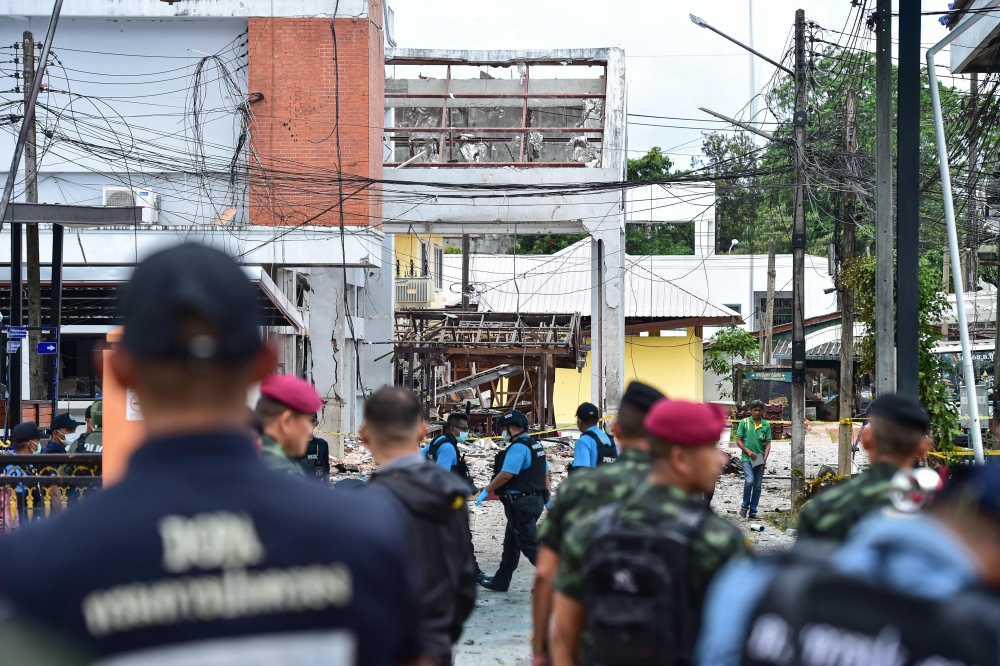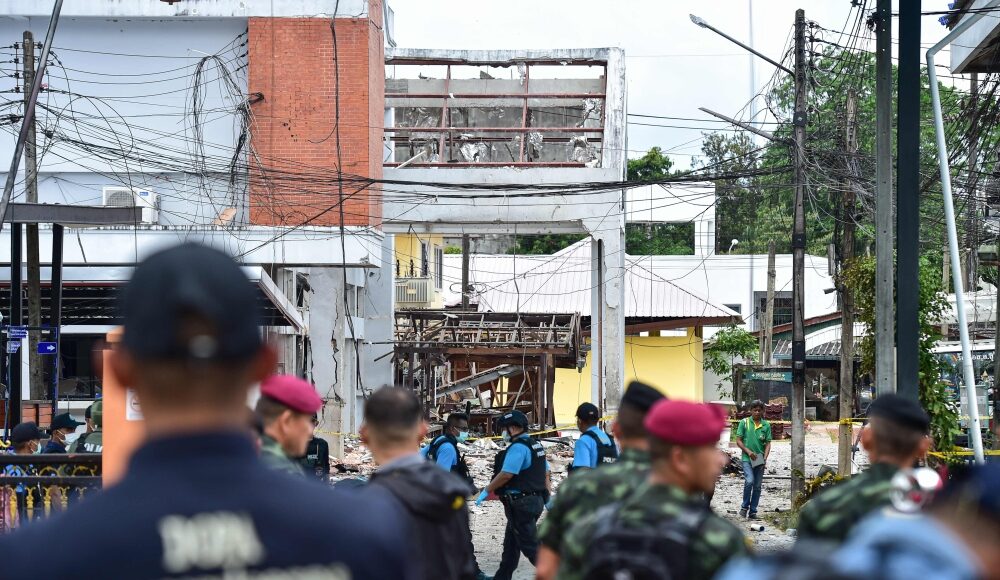APRIL 3 — Southern Thailand, with its unique historical, cultural, and religious background, has long been trapped in a bloody conflict involving separatism, ethnic tensions, and religious ideology. This region, which includes the three Malay-Muslim majority provinces of Pattani, Yala, and Narathiwat, has experienced tensions between the Thai government and insurgent groups demanding greater autonomy for the Malay-Muslim population that dominates the area.
I have had the opportunity to travel to southern Thailand several times and have always been amazed by its vast potential. The region is rich in culture, offers a variety of delicious local delicacies, showcases breathtaking landscapes, and is home to warm and hospitable communities. One cannot help but admire the beauty of timeless Malay architecture in landmarks such as Masjid Wadi Al-Hussein, Istana Yaring, and Istana Teluban—remnants of the once-glorious Pattani Sultanate.
At times, the cultural similarities are so striking that I momentarily forget I have crossed the border from Kelantan into a neighbouring country.
The history of conflict and causes of tension
The conflict in southern Thailand began decades ago when the Thai government implemented stricter integration policies in the south. The struggle against injustice started as a response to cultural and religious oppression, where the local population felt that their identity as Malay-Muslims was being disregarded within the predominantly Buddhist state structure. This uprising intensified in 2004 when violence escalated with major attacks targeting security forces, government institutions, and civilians.
According to Thai’s English news outlet, The Nation, there have been nearly 10,000 attacks in the past two decades. Recently in March 2025, a tragic bombing in Sungai Golok, which claimed the lives of two Thai security personnel and injured eight others, highlighted the severity of this conflict. This incident once again demonstrates that the situation in southern Thailand remains volatile and that the long-desired peace is still far from being achieved.
Peace efforts between Southern Thailand and Bangkok
In an effort to achieve peace, the Thai government has initiated several negotiation efforts with insurgent groups in the south. In 2013, a peace negotiation process led by Malaysia began, known as the ‘Southern Thailand Peace Process.’ This was a positive step in the efforts of both sides to find a fair and sustainable solution.
The negotiations provided a platform for direct discussions between Thai government representatives and insurgent group representatives, who had previously operated covertly. Malaysia, as a neighbouring country with close ties to Thailand, played a facilitating role in this process. Although the negotiations have not always led to significant resolutions, they demonstrate a willingness on both sides to continue dialogue.
The Bangkok government has also introduced several initiatives to strengthen relations with local communities, including policies that grant greater freedom in religious and educational matters in southern Thailand.
Development programs aimed at improving the local population’s standard of living have also been implemented, although significant challenges remain in addressing poverty and social injustice.
The failure of assimilation in Southern Thailand
Although the Thai government has attempted to assimilate the Malay-Muslim population in the south by introducing integration policies and Thai-language education, these efforts have not been a total success. The assimilation process faces significant challenges, primarily due to the deep cultural and religious differences between the southern population and the Buddhist-majority Thai population.
Similar to the situation in other countries, such as France’s approach to its Muslim communities in the suburbs (banlieues) and the Kurdish population in Turkey, assimilation efforts that suppress cultural identity often fail, leading to ongoing tensions and dissatisfaction among marginalised communities.
Additionally, the failure to meet demands for autonomy and local community rights has exacerbated tensions and fuelled the struggle for justice. This suggests that the Thai government’s assimilation efforts have been more focused on standardisation rather than solutions that appreciate the cultural and religious diversity of southern Thailand.

Adopting Malaysia’s approach: A guide for Thailand
Malay culture is recognised as the foundation of Malaysia’s national culture, as outlined in the National Cultural Policy of 1971. This policy aims to unite Malaysia’s diverse ethnic and cultural groups under a national identity while respecting existing diversity. Despite this diversity, Malay culture is acknowledged as the core of the national identity within this policy.
Malaysia’s approach, which allows non-Malay ethnic groups to practice their languages and cultures, could serve as a useful example for Thailand. Malaysia has successfully fostered social harmony by recognising each ethnic identity, allowing them space to flourish without suppressing cultural and religious diversity. By granting greater autonomy to the communities in southern Thailand regarding religious and cultural matters, Thailand could create a more inclusive environment.
Malaysia has also demonstrated how multilingual education can strengthen interethnic unity. The teaching of native languages, such as Malay, in Malaysian schools not only helps preserve cultural identity but also fosters understanding and tolerance among different ethnic groups. Thailand could adopt this policy by giving greater recognition to the Malay language and Islamic culture, without compromising national integration.
Moreover, the Thai government could observe Malaysia’s role as a facilitator in peace negotiations. Malaysia, which has close ties with both Thailand and the Malay-Muslim communities in the south, can play a crucial role in bringing different parties together. As demonstrated in the Malaysia-led southern Thailand peace process, Malaysia can continue to assist in ensuring dialogue between the Thai government and insurgent groups remains constructive.
Listening to the voices of the people
One of the key steps in achieving peace is listening to the voices of the people. Conflict resolution cannot be achieved without involving local communities in the negotiation process. Therefore, honest dialogue between the Thai government and representatives of insurgent groups must be prioritised. Local leaders, religious scholars, and community figures must be given a platform to express their concerns and hopes, with the goal of reaching a broader consensus on the future of the region.
Additionally, empowering local communities is crucial. Peace cannot be achieved solely through military strength but also through economic, educational, and social empowerment. By providing better economic opportunities, ensuring access to quality education, and improving infrastructure in affected areas, the Thai government can reduce local grievances and minimise support for violence.
Promoting tolerance and integration
It is important to remember that peace is not only about resolving armed conflict but also about creating conditions where people can live harmoniously and work together to build a better future.
This requires a change in attitudes and perceptions towards religious and ethnic differences, as well as efforts to strengthen unity among all levels of society.
Achieving peace in southern Thailand is a long journey that requires commitment, patience, and courage from all parties. A peaceful resolution is not something that can be achieved overnight, but with an inclusive approach — one that involves open dialogue, economic empowerment, and international support — a stable and peaceful future for southern Thailand may be within reach.
The ongoing efforts between the people of the south and the central government in Bangkok through continuous negotiations are positive steps, but they require greater sincerity and commitment from all parties to ensure that peace can be achieved and sustained for a better future.
*Associate Professor Mohd Hazmi Mohd Rusli is a Coordinator with the International Law Unit, Faculty of Syariah and Law at Universiti Sains Islam Malaysia, and a Visiting Researcher at the Asian Institute of International Affairs and Diplomacy, Universiti Utara Malaysia (AIIAD, UUM Kedah).
**This is the personal opinion of the writer or publication and does not necessarily represent the views of Malay Mail.





